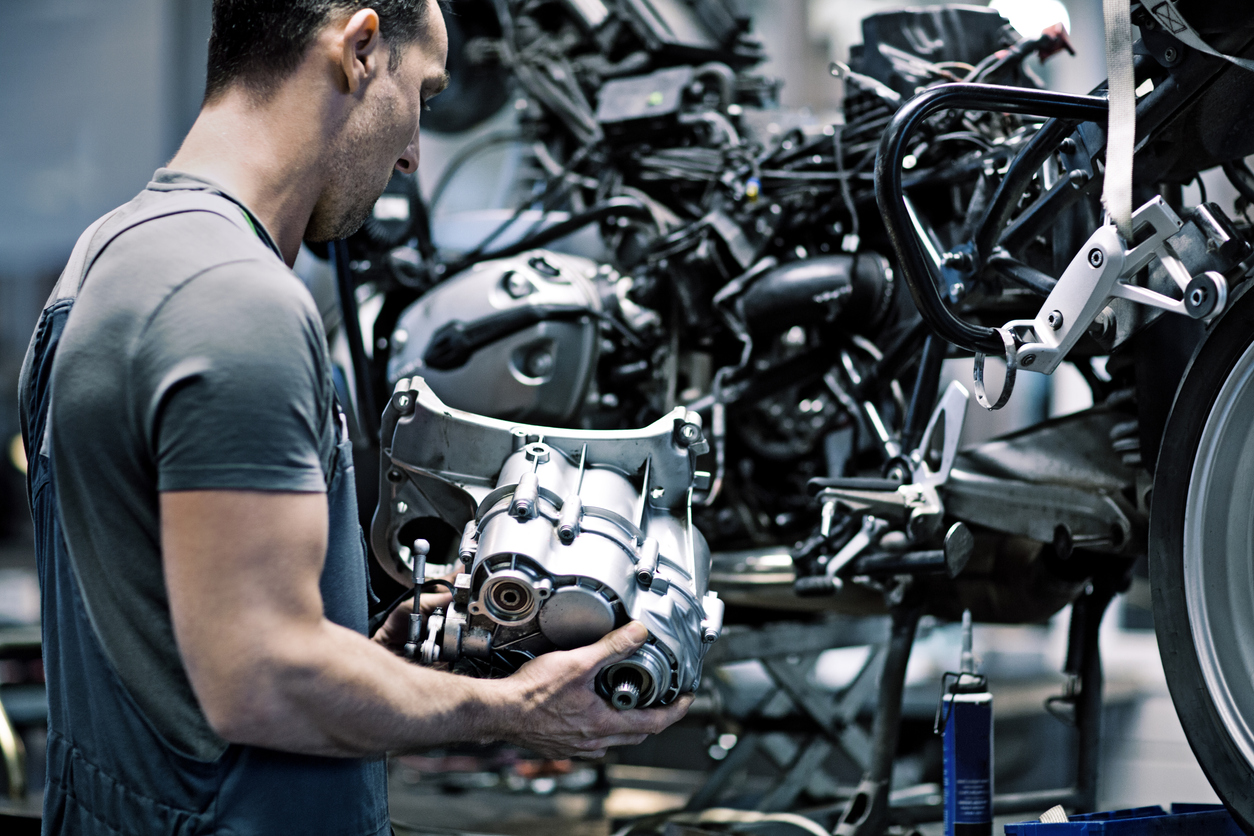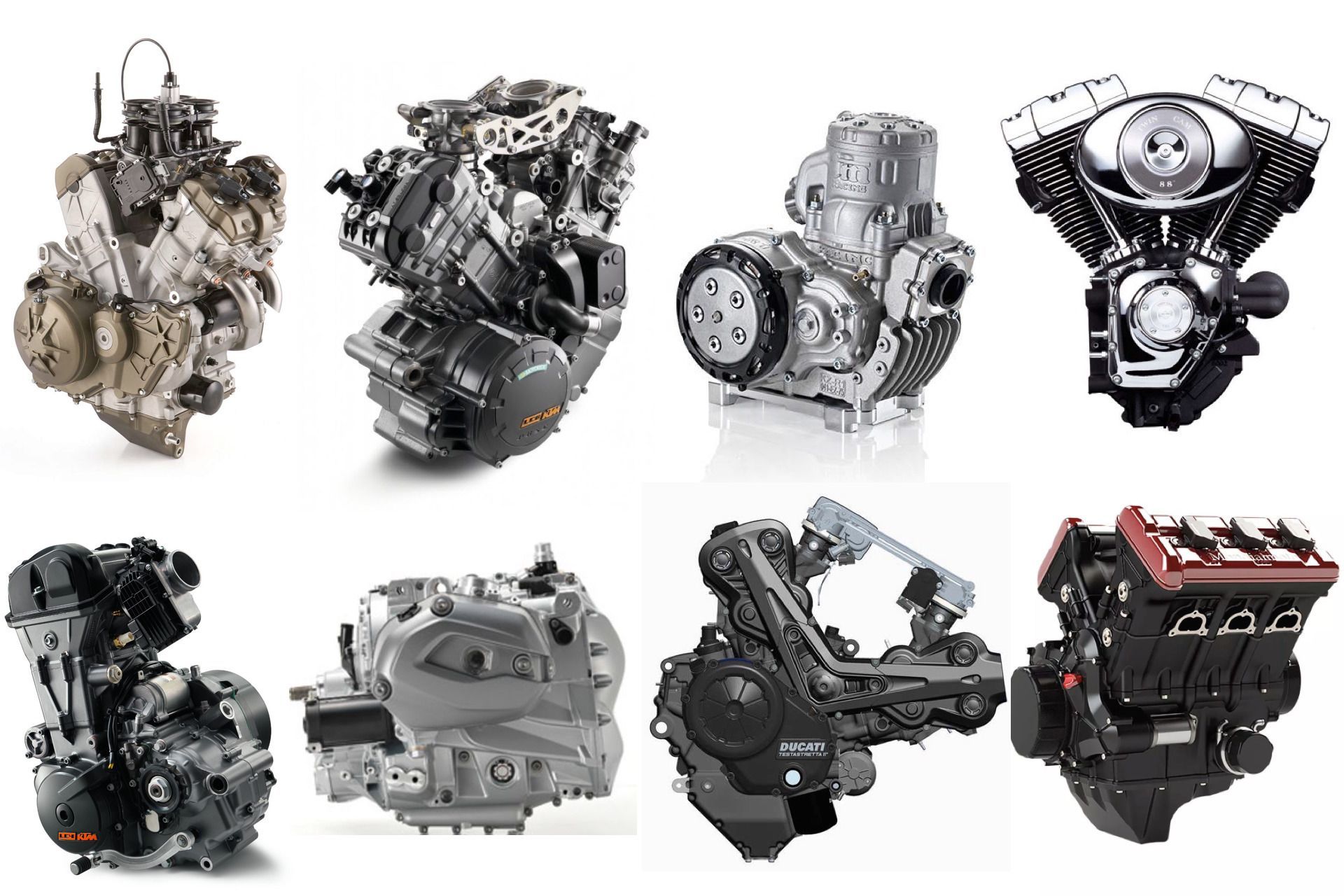Mar 13, 2024
Types Of Motorcycle Engines
Powering the Ride: A Guide to Different Types of Motorcycle Engines
The engine is the heart of a motorcycle. It’s the force that propels you forward, the source of the thrilling rumble, and a key factor influencing your riding experience. Understanding the different types of motorcycle engines empowers you to choose the right machine for your needs and preferences. This guide explores the most common engine configurations, their functionalities, and the advantages they offer to riders.
A Tale of Strokes: Two-Stroke vs. Four-Stroke Engines
A fundamental distinction exists between two main engine types: two-stroke and four-stroke.
-
Two-Stroke Engines: These engines complete the intake, compression, combustion, and exhaust processes in two strokes of the piston. They are known for their simplicity and lightweight design. However, they typically produce more emissions and are less fuel-efficient compared to four-stroke engines. Two-stroke engines are becoming less common due to stricter emission regulations, but they are still found in some off-road motorcycles and scooters.
-
Four-Stroke Engines: This is the most widely used engine type in motorcycles today. A four-stroke engine completes a four-part cycle: intake, compression, combustion, and exhaust. Each stroke involves the piston moving up or down within the cylinder. Four-stroke engines offer a good balance of power, fuel efficiency, and emissions compared to two-stroke engines.
A Symphony of Cylinders: Exploring Engine Layouts
The number and arrangement of cylinders in an engine significantly impact its performance and character. Here’s a breakdown of the most common engine layouts:
-
Single-Cylinder Engine: This is the simplest engine configuration, featuring one cylinder and piston. Single-cylinder engines are known for their lightweight design, fuel efficiency, and affordability. However, they may lack the power of multi-cylinder engines. They are popular choices for smaller motorcycles, beginner riders, and those prioritizing fuel economy.
-
Parallel-Twin Engine: Two cylinders are positioned horizontally side-by-side in a parallel-twin engine. They offer a good balance of power, weight, and fuel efficiency, making them popular for a variety of motorcycle styles, from beginner-friendly models to street bikes.
-
V-Twin Engine: V-twin engines have two cylinders arranged in a V-shape configuration. They are known for their distinctive sound and deliver good torque, making them popular for cruiser motorcycles. These engines provide a strong low-end pull, ideal for relaxed cruising and highway riding.
-
Inline-Four Engine: These engines feature four cylinders positioned vertically in a line along the motorcycle’s frame. They offer high performance and smooth power delivery, making them popular for sportbikes and high-performance motorcycles. Inline-fours are known for their ability to rev high and produce significant horsepower.
-
Inline-Triple Engine: Inline-triple engines offer a compromise between parallel-twin and inline-four engines. They provide more power and a smoother power delivery than parallel-twins, but are typically lighter and more compact than inline-fours. These engines are becoming increasingly popular in various motorcycle categories.
Choosing the Right Engine for Your Ride: Matching Your Needs
Selecting the right engine for your motorcycle depends on your riding style, preferences, and intended use:
-
Sporty Riding: For aggressive riding and high speeds, prioritize high-performance engines like inline-fours found in sportbikes. These engines deliver exhilarating power at higher RPMs, ideal for carving through corners and achieving top speeds.
-
Cruising and Relaxed Rides: For a laid-back cruising experience, focus on engines that offer low-end torque for effortless acceleration from a stop and comfortable cruising speeds. V-twin engines, popular in cruiser motorcycles, excel in this area.
-
Adventure and Off-Road: Tackling off-road terrain requires an engine that can handle a variety of conditions. Single-cylinder or parallel-twin engines are popular choices for adventure motorcycles. They offer a good balance of power, weight, and low-end torque for navigating challenging terrain.
-
Commuting and City Riding: For everyday commuting in urban environments, fuel efficiency and maneuverability are key. Smaller displacement engines, such as single-cylinder or parallel-twin engines, offer good fuel economy and a nimble feel, making them ideal for navigating city streets and stop-and-go traffic.
Additional Considerations: Beyond the basic layout, consider factors like engine displacement (size) and weight. A larger displacement engine typically translates to more power, but also comes with increased weight and potentially lower fuel efficiency. The weight of the engine impacts the motorcycle’s handling and agility.
Beyond the Basics: Performance Enhancements (Optional)
For riders seeking to optimize their motorcycle’s performance, various aftermarket modifications are available. However, it’s crucial to understand the potential impact on your motorcycle’s warranty, fuel efficiency, and emissions regulations before making any modifications. Here are some common performance enhancements:
-
Performance Exhaust Systems: Aftermarket exhaust systems can improve power delivery and weight reduction. However, they may also increase noise levels and require adjustments to the fuel injection system.
-
Performance Air Intake Systems: These systems can improve airflow to the engine, potentially leading to increased power. However, they may require recalibration of the engine computer.
-
Engine Tuning: Engine tuning involves adjusting various engine parameters for optimal performance. This is typically done with specialized equipment and software and should only be performed by experienced mechanics. Modifications can include adjusting fuel injection maps, ignition timing, and camshaft settings. However, engine tuning can be complex and may void your motorcycle’s warranty.
The Future of Motorcycle Engines: Innovation and Sustainability
The future of motorcycle engines is driven by innovation and a growing focus on sustainability. Here are some promising trends:
-
Electric Motorcycles: Electric motorcycles offer a clean and silent alternative to gasoline-powered motorcycles. Advancements in battery technology are expanding electric motorcycle range and performance, making them a more viable option for riders.
-
Hybrid Motorcycles: Combining an electric motor with a traditional gasoline engine, hybrid motorcycles offer the potential for improved fuel efficiency and reduced emissions.
-
Alternative Fuels: Research and development are exploring alternative fuels like biofuels and hydrogen for motorcycles. These fuels offer the potential for a more sustainable future for motorcycling.
Conclusion: The Perfect Engine Awaits
Understanding the different types of motorcycle engines empowers you to choose the perfect match for your riding style and needs. From the simplicity of a single-cylinder engine to the high-performance capabilities of an inline-four, each engine configuration offers a unique riding experience. Consider your riding preferences, prioritize the features that matter most to you, and explore the world of motorcycle engines to find the perfect fit for your next adventure on two wheels. Remember, the engine is the heart of your motorcycle, so choose wisely and enjoy the ride!
More Details